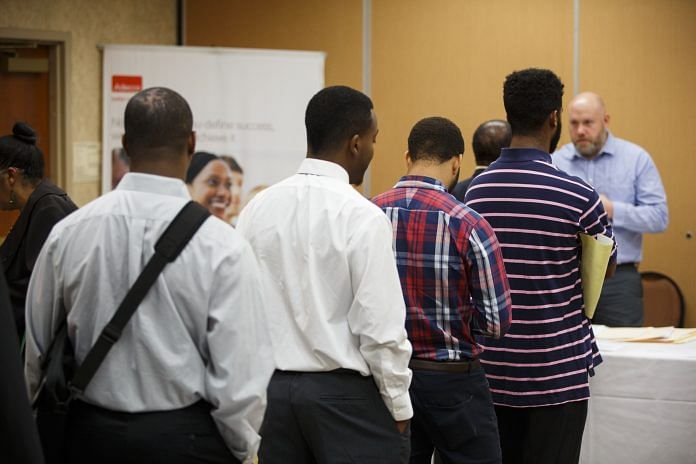Under distributed ownership, an enterprise is owned and run jointly by its members.
With the Fourth Industrial Revolution underway, India must leverage this period of robust economic development for inclusive growth. But lack of skills development and job creation present major obstacles, as highlighted by the World Economic Forum’s recent report, “The Future of Consumption in Consumer Markets: India”.
By 2027, India is forecast to be the world’s third-largest consumer economy. Its working age population is rising by 10-12 million annually. Increases in gainful employment must happen at the same rate to ensure inclusive growth. The majority of those currently working do so in the informal sector, while many remain without work due to the lack of skills development and/or regional disparity. Female employment is alarmingly low and on the decline, with only 25% of working age women employed.
It’s clear that India faces challenges in creating job opportunities, in both urban and rural areas, and especially for women. How do we solve these issues in order to achieve inclusive growth? The key lies in distributed ownership.
Distributed ownership refers to a company ownership model in which an enterprise is owned and run jointly by its members, who then share its profits and benefits. It offers tremendous robustness, flexibility and, when properly executed, massive scalability.
The first two industrial revolutions were founded on centralization. Mass production required enormous factories, rigid manufacturing and centralized decision-making. However, today’s digital connectivity provides the opportunity to create distributed models of production.
Furthermore, our evolving culture of consumption has created a market for traceable products that favour customizable, small batch methods. Distributed ownership holds the key to unlocking the $5 trillion market opportunity in sustainable consumption, out of the estimated $10 trillion food, fashion and home markets in 2030.
However, effectively implementing such a system at scale requires producers to have the skills and intent to run and own global enterprises. The challenge of creating the initial physical, digital and human infrastructure is immense. But once in place, this model has tremendous scalability potential.
In one of the examples below, after the six-year road to achieving global compliance standards, Bangalore GreenKraft Producer Company was able to scale from 200 women to 1500 women, and saw its revenue capacity rise from $150,000 to $1 million in a single month.
Rural communities often engaged in agriculture and allied activities are, in many ways, the custodians of the commons – especially soil, water and air. Creating lucrative opportunities that reduce urban migration and encourage the use of renewable raw materials and manufacturing methods through distributed ownership can also be a potent weapon against climate change.
A tried and tested solution
Bangalore GreenKraft, incorporated in 2012, is a Bangalore-based producer-owned company that manufactures home and lifestyle goods from natural fibre. Its product range includes reusable leaf plates (reducing the need for single-use plastics), cloth sanitary pads and banana bark home accessories. Supplying to both domestic and international brands, including retailers such as IKEA, Lombard, Ecofemme and Mother Earth, GreenKraft’s annual revenue is more than $1 million.
It employs around 1700 producers, all of whom have a stake in the company. Their earnings include wages, profit sharing at the producer company level, and profit sharing from ownership of a brand. As a result, members consistently earn three times more than their previous income. More than 90% of GreenKraft producers are women, with a significant number of them in supervisory and managerial positions.
Amul, a case for scale
Amul, formed in 1948, is today jointly owned by 3.6 million dairy farmers in the Indian state of Gujarat. It is India’s largest food product marketing organization, with an annual revenue of $4.5 billion. Amul procures approximately 18 million litres of milk every day. Its massive scale has been achieved by a three-tiered organizational structure: dairy cooperative societies at the village level, federated under a milk union at the district level, and a federation of district milk unions at the state level.
Appointing professional domain experts in fields where farmers do not have expertise, such as marketing and supply chain management, is a key feature of Amul’s model. The company has been able to create direct market linkages between milk producers and consumers, while ensuring that control of procurement and processing lies with the farmer, as does ownership of the brand. As a result, Amul has managed to quadruple its farmers’ incomes over the last seven years.
The path to inclusive growth
Through a distributed ownership model, micro-entrepreneurs have the opportunity not only to increase their income, but achieve social equity and own robust, scalable global enterprises, improving their livelihoods. Empowering individuals to build their own organizations promotes skill development and job creation, and establishes a sustainable, scalable model to support inclusive growth.
Neelam Chhiber is the Managing Director, Industree/Mother Earth
This article was originally published on the website of World Economic Forum. Read the original article here.




Sahi jankari ke bad ap bole sayd apko Pata nahi mek in India Ka kam khub chal raha he des me ap Pata Karo
More news channels more lies, half truths, bias and confusion for the viewers.
Need of the hour is plain un-biased factual news.
Can any of the names mentioned provide it ?